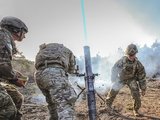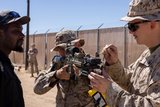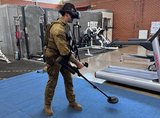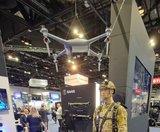How generative AI can improve military training
Generative AI can help create realistic simulation environments. (Photo: USAF)
Generative artificial intelligence (AI) has been proving itself as an efficient tool in various domains. In the defence realm, it has the potential to improve military readiness and training, experts believe.
By using models that can recognise patterns in massive datasets and use those patterns to generate statistically probable data, armies could better analyse adversaries' behaviour and predict their strategies as well as the potential ways they would attack and defend.
Those models can also provide realistic simulation environments for skill-building practice while reducing the costs and risks associated with large-scale training events.
Another advantage of generative AI is the possibility to
Already have an account? Log in
Want to keep reading this article?
More from Training
-
![Cubic tailors mortar simulator for the US Army]()
Cubic tailors mortar simulator for the US Army
The company’s mortar trainer received improvements based on soldier’s feedback.
-
![Saab expands footprint in the US]()
Saab expands footprint in the US
The company will operate in two new locations in the coming years to better support US services.
-
![How terrain management capabilities can improve military training]()
How terrain management capabilities can improve military training
This type of tool provides more realistic training easing the incorporation of new scenarios that accurately represent the threats of the battlefield.
-
![I/ITSEC 2024: Australian Army approaches second phase of countermining training]()
I/ITSEC 2024: Australian Army approaches second phase of countermining training
The Engineering Corps has been conducting individual instruction using FLAIM Systems’ Sweeper and should start collective deployments in 2025.
-
![I/ITSEC 2024: Zeiss introduces Velvet 4K SIM projector for night flight simulation]()
I/ITSEC 2024: Zeiss introduces Velvet 4K SIM projector for night flight simulation
The next-generation platform is motion-compatible and can be used in OTW and NVG applications.
-
![I/ITSEC 2024: Saab introduces UAV live training capability]()
I/ITSEC 2024: Saab introduces UAV live training capability
The system can be used to prepare soldiers for both drone offensive operations and CUAS missions.

























